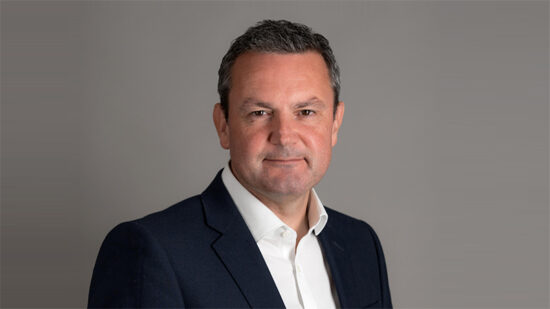Offering low levels of income and disappointing total returns, it’s not unfair to say that bonds for the most part have been in the doldrums for the past decade.
After the global financial crisis of 2008 ushered in an era of ultra-low interest rates, bonds, which were yielding close to 0%, were cast aside as investors turned their gaze to the more appealing growth-oriented equities – namely technology.
However as interest rates have soared and yields on bonds have climbed, many experts now argue that fixed income as an asset class is reclaiming its rightful place as a crucial element of a balanced portfolio.
The turnaround in yields and macroeconomic environment has also led many fixed income managers to claim that 2024 will be the ‘year of the bond’, so should investors be taking heed?
See also: Head to head: Will the year of the dragon herald better times for China?
In this month’s portfolio constructor head to head, Fatima Luis (pictured left), senior portfolio manager at Mirabaud Asset Management, discusses the opportunities she sees within fixed income this year, while Amanda Sillars (pictured right), investment manager and ESG investment director at Jupiter Independent Funds/Merlin, warns the rollercoaster that bond investors have been riding is showing no signs of stabilising.
Fatima Luis, senior fixed income portfolio manager, Mirabaud Asset Management
We see opportunities across all parts of the fixed income universe in 2024, given we expect differing effects from a slowing economic environment, alongside lower inflation and interest rate cuts.
Although investors have moderated their expectations as to when and how many US and European interest rate cuts are priced into the market, timing will certainly be key this year.
The near certainty of a soft landing where inflation comes down and growth moderates has now shifted to a ‘no landing’, where an economy continues to expand and rates remain higher. Behind this shift is strong economic data that continues to show a resilient consumer. Tight labour markets on both sides of the Atlantic are also keeping unemployment rates surprisingly low.
We think global inflation will track downwards from the highs of 2023 and interest rate reductions therefore seem inevitable in 2024 as we move towards a much slower economic environment.
We expect the Federal Reserve to lead the cutting cycle, but with the UK and Europe following closely behind. Uncertainty and volatility were quite evident in 2023 and as the trajectory of rate cuts becomes clearer, we anticipate uncertainty falling.
This type of macro environment should result in continued positive returns for higher-quality, longer-duration fixed-income securities – both in developed and emerging markets with the latter more dependent on a weaker US dollar.
With a lower recession probability and ‘higher for longer’ scenario increased, the good news is that high-quality investment-grade and global high-yield bonds should still deliver positive returns. For example, all-in yields on European investment-grade bonds are at levels last seen during the European sovereign debt crisis in 2010-11, supporting the mantra that income is back.
One area where there are opportunities to increase yield is in the primary issue market, where deals are coming with the highest coupons we have seen in years. Conversely, convexity is still available where highly rated but low coupon bonds still trade at very low cash prices.
With all-in yields attractive on higher-quality corporate bonds, spreads are in line with a ‘soft landing’ or ‘Goldilocks’ scenario. Furthermore, the overall quality of the market has also improved with many high-yield corporate issuers’ ratings moving upward, making the universe stronger from a fundamental perspective.
When the economic slowdown hits and rates begin to fall, this is when we would expect riskier credit to outperform. Our target on high yield bond spreads is around 500 basis points. We believe this level would indicate a clear buying opportunity. Then, as interest rates are cut to stimulate growth, we would expect lower-quality credit to begin to perform.
Amanda Sillars, investment manager, Jupiter Asset Management
The second quarter of 2024 is nigh, and it appears the rollercoaster which bond investors and managers have been riding for the past four years shows no sign of stabilising. Indeed, it is challenging to truly know whether the next lurch in bond yields will be up or down.
Bonds are no longer the ‘risk-free’, low-volatility, reliable ballast that investors depended upon in multi-asset portfolios.
So, what has changed in the past four years? In 2019, most developed market global bonds were enjoying the final year in over a decade of strong performance each year. Priced for permanent low growth and low inflation, their yields (the inverse of prices) were pathetic.
For example, our 10-year gilt yielded less than 1% (versus over 4.2% today) and Europe experimented with negative rates, desperate to support anaemic growth. When bond investors need to pay to lend their capital, as opposed to receiving an income stream, something is clearly wrong.
Covid shattered that eerie serenity, catalysing a hair-raising collapse in prices. Financial markets demanded strong economic support and policymakers flooded the market with fiscal and monetary support. This rare combination caused one of the biggest rallies seen in history for equities and fixed income.
A meteoric rise in liquidity from these policies, coupled with pent-up savings and supply chain disruption reignited the inflation genie.
Like the legendary Aladdin, once released, inflation balloons in size and is self-perpetuating. Once again, developed market central banks were forced to act swiftly by raising interest rates.
Never in my career have I witnessed the US 10-year-treasury yield soar from 0.5% to 5% in just three years – or global bond prices fall by over 15% in two years. Of course, the drawdown was significantly greater for longer-dated bonds. Many investors felt betrayed by fixed interest posting steep losses, in tandem with equities. With such high correlation, the traditional benefits of a ‘balanced’ 60/40 portfolio were annihilated.
This is the inheritance investors have today, which sets the scene for tomorrow. Bond yields now deliver meaningful real income and can deliver income over a long time horizon (this is their key advantage versus cash). Yields continue to defy wise pundits by remaining at higher levels.
For example, the Jupiter Global High Yield Bond fund is a high-conviction fund held across the Jupiter Merlin portfolios (those with an allocation to fixed interest), currently yielding 9.2%.
Mathematically, inflation and interest rates are unlikely to rise considerably from these levels. Yet expert opinions and the outstanding fixed-interest managers our team are fortunate enough to follow still have deeply divided opinions of the outlook. So, expect further volatility.
When navigating within an attractive but volatile asset class, skill and agility is priceless. As manager selectors, we are first and foremost choosing people. As investors of other people’s precious savings, our aspiration is to compound the value of those savings, over time. During the past two decades, we have found this is best achieved by avoiding downside; then capturing sufficient quantities of upside in markets where it is available.
We therefore seek active bond managers who prepare for volatility, thereby insulating their future performance as much as possible.
This is assisted by having a broad breadth of views. For example, within Jupiter there is no house view and different managers express different views on macro, interest rates and credit spreads.
Agility, used well, can also enhance performance. For instance, Adam Darling, a fixed income investment manager at Jupiter, increased energy exposure when oil prices dipped below $0 per barrel in April 2020. Another crucial competitive advantage is that his burden is still light, with just £138m under management.
Finally, his principal source of alpha has been successful credit selection. Darling is extremely discerning about each of the 152 of issuers held and is benchmark agnostic. This deviation is necessary to avoid the most expensive issues, steer clear of the most likely default candidates. provide stability and, we hope, avoid the extremes in what may continue to be a white-knuckle ride.
This article was written for our sister title Portfolio Adviser’s March magazine











